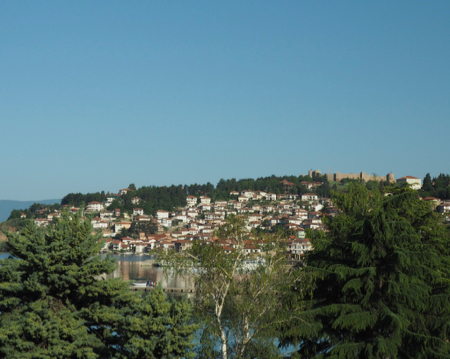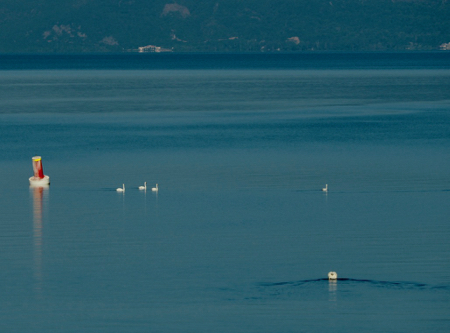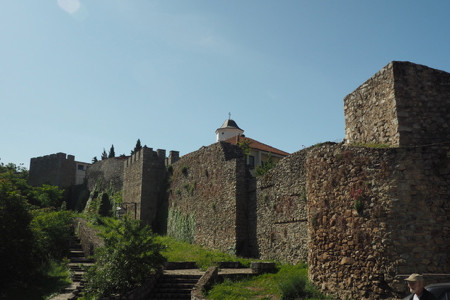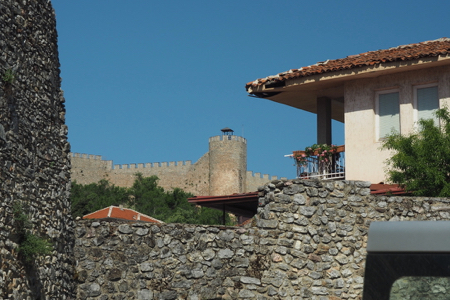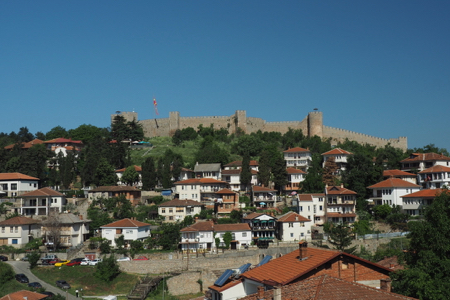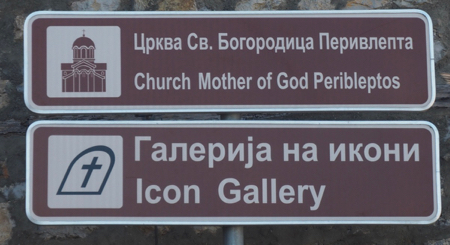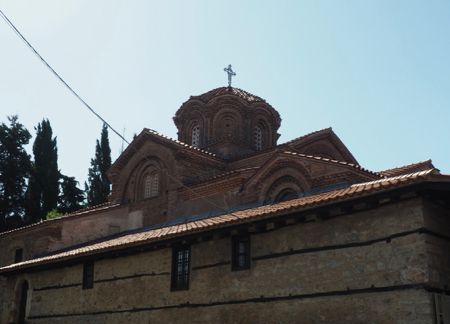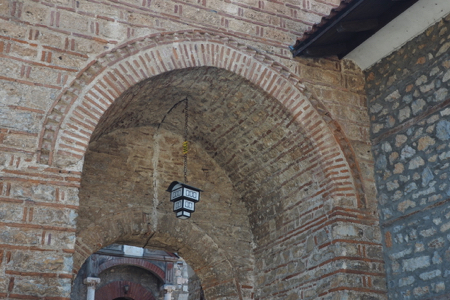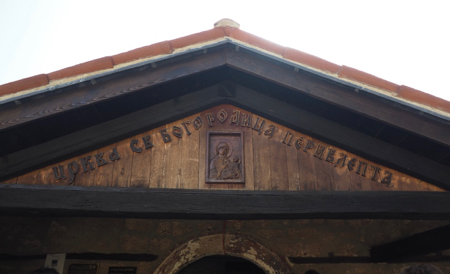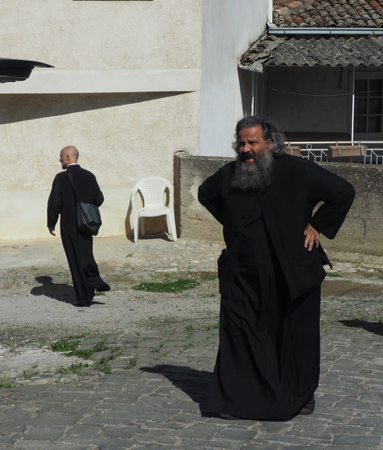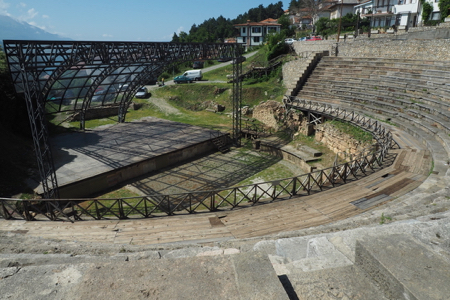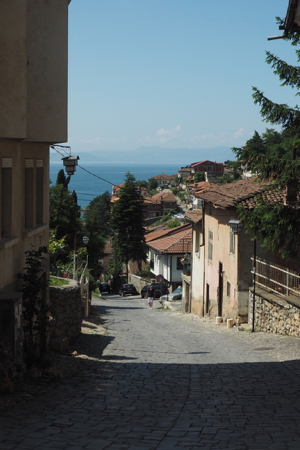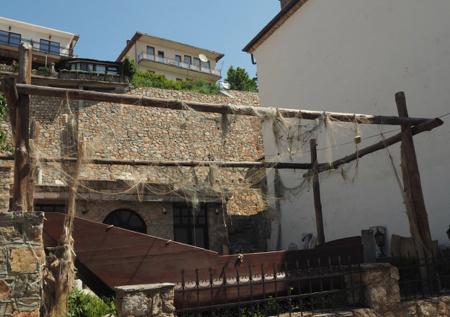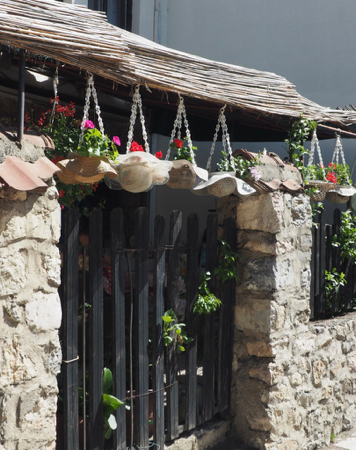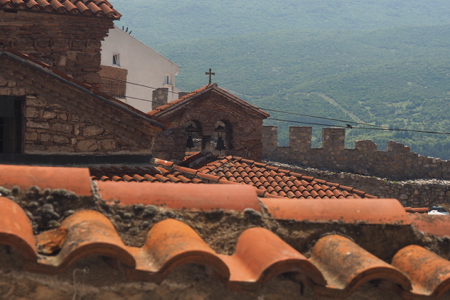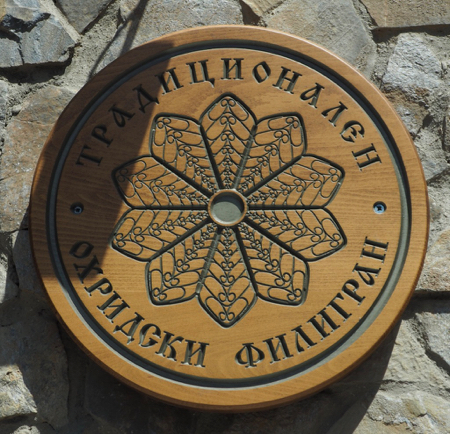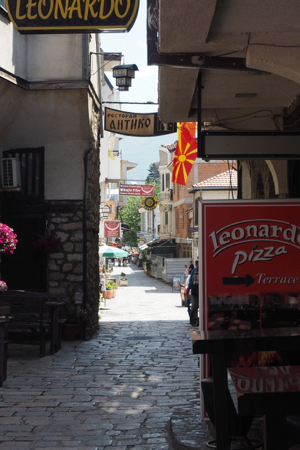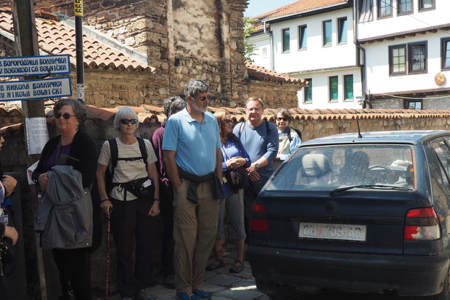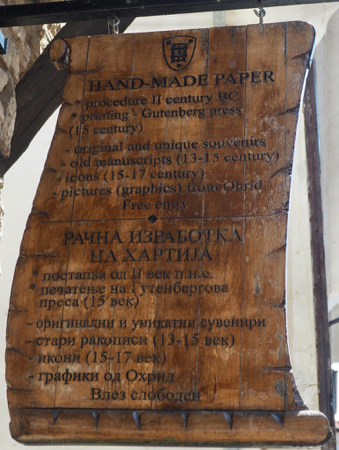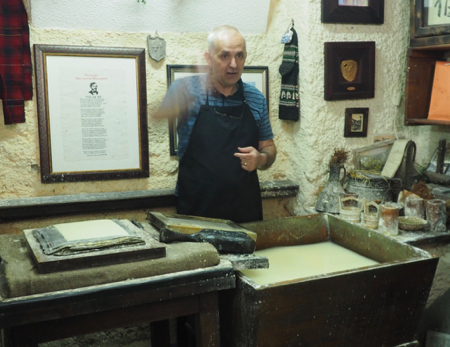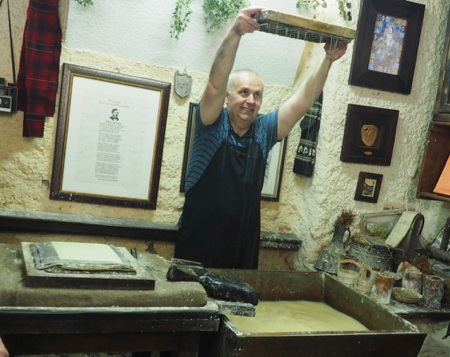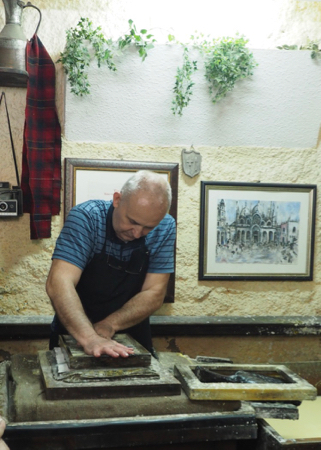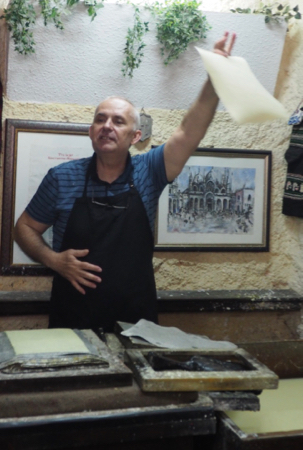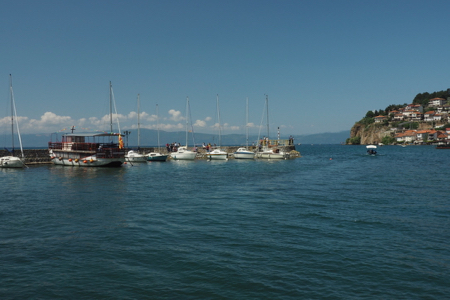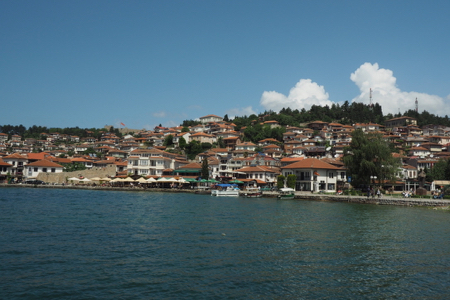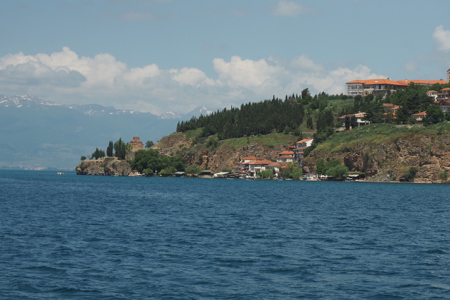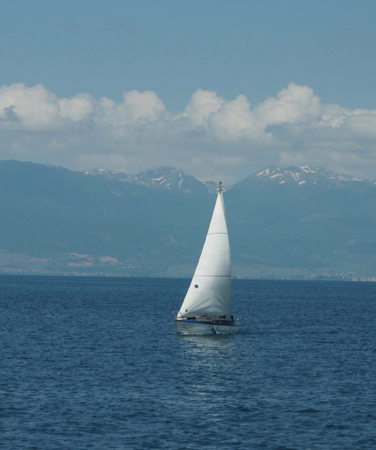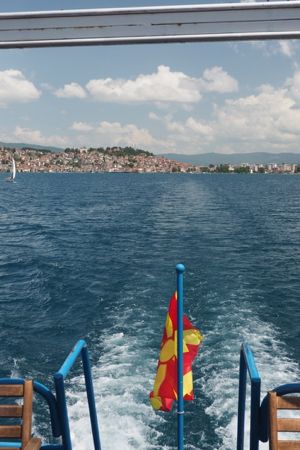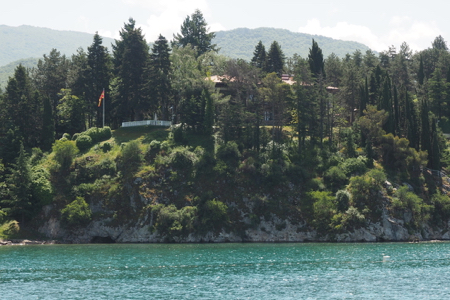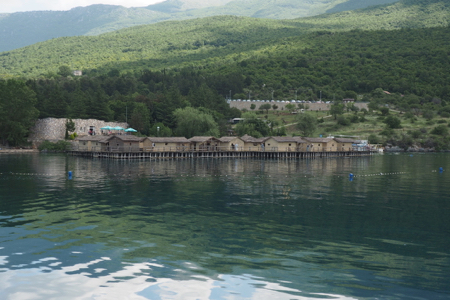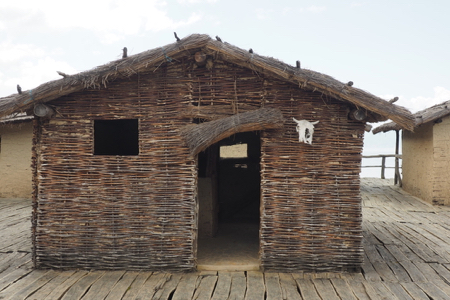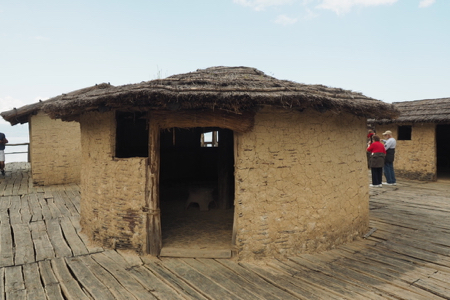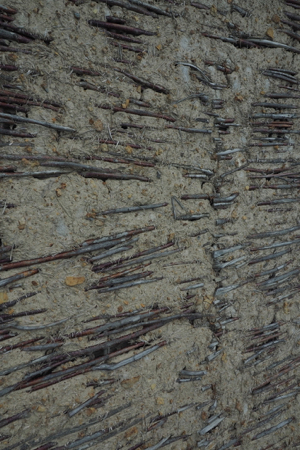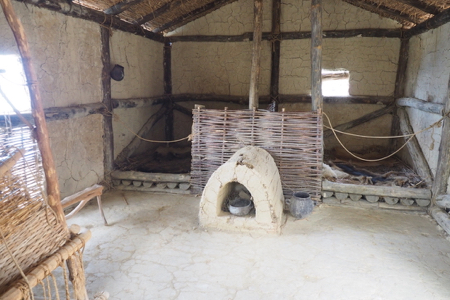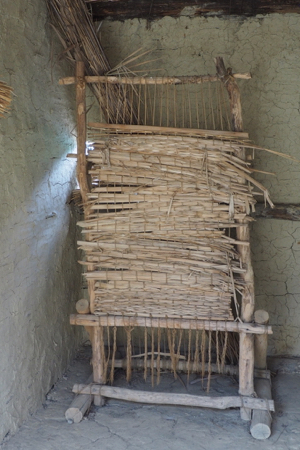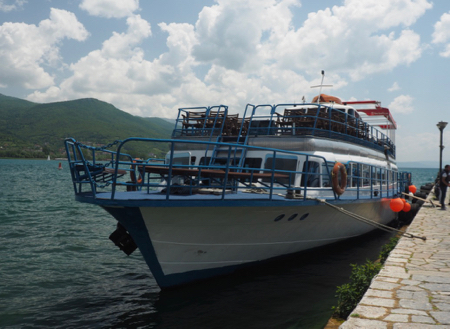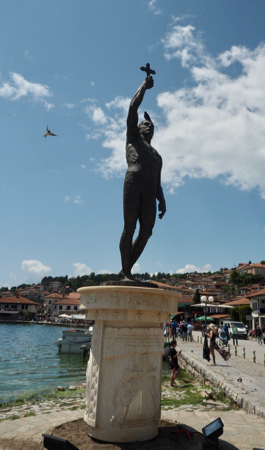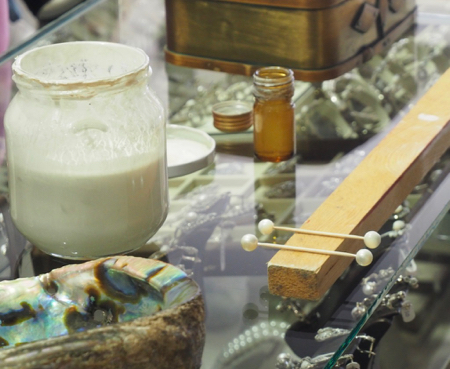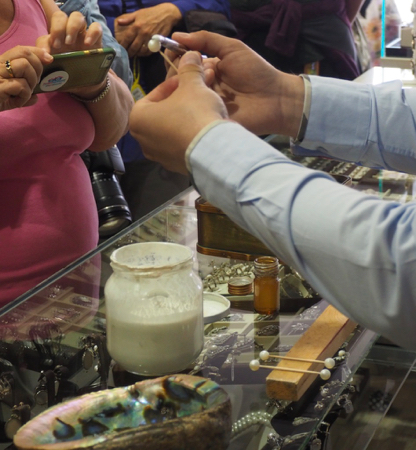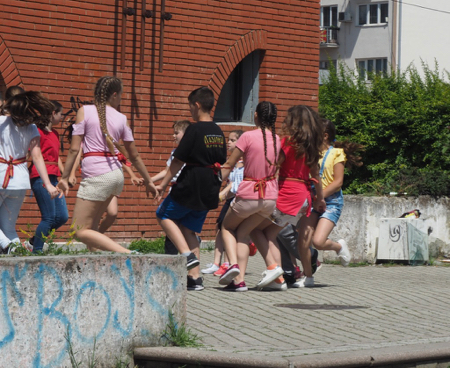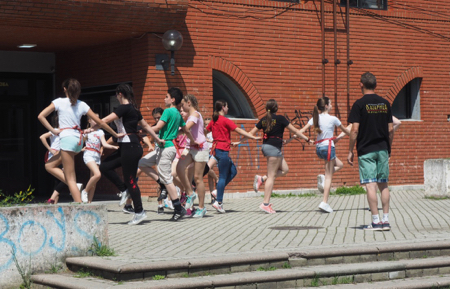Fri., 5/25/18 - Ohrid, Macedonia
At 9 AM this morning, we got into taxis (the drivers are very aggressive and impatient) and rode to the area of the old fortress. The old city walls were built in the 4th c. BCE, in the time of King Philip II. Over the centuries they kept building on top of them. The second ring of safety and defense was inside the fortress with King Samuel’s castle inside.
We went inside the Church of Mother of God Peribleptos, which means “Mother Mary looking Everywhere.” The 13th c. frescos inside (no photos) were remarkable. They covered all of the walls and 20 of them were signed by their artist which is very unusual. Since the paintings were finished by 1295, they may precede the Italian Renaissance. They show emotional facial expressions and suggest movement. The Last Supper was different from any we have seen and Sts. Peter and Paul are beside Jesus with Judas (no halo) reaching for bread. An unusual interpretation of the crucifixion has Jesus walking up a ladder to get nailed to the cross while the soldiers are taking his robe. Many churches were built there (26) between the 11th and 14th c. This one may be the most significant. During Tito’s socialism, religion was not banned so the frescos were never destroyed.
The 500 dinar bill has a golden mask on it. That mask was found just outside of the church. The tomb of an 11-year-old prince was discovered when a sewer line was repaired. The solid gold mask, rings, and jewels were buried with human sacrifices - a young girl, soldiers, and servants - and items he would need in the next world just like Egyptian princes would have been buried.
Ohrid from our hotel room
Swans on the lake
Old city walls
Samuel's Fortress beyond the old city walls
Samuel's Fortress in the distance
Church of Mother of God Peribleptos
Church of Mother of God Peribleptos
Church of Mother of God Peribleptos
Holy man laboring up the hill
The 2400-year-old open theater of Philip II was uncovered in the 1980s. Fourteen houses and two streets were built on top of it. Originally, it was used for drama and seated 2,000 people which means Ohrid at the time had a population of about 20,000. The Romans adapted it for animal and gladiator fights. It has been restored and is used for summer folk and music festivals.
After viewing the theater, we walked down and through the main part of town.
Theater of King Phillip II
Typical street
Drying fishing nets
Lovely hanging planters made from hats
Over the rooftops
Very narrow streets
Very tight squeeze!
We made a quick stop at the “National Workshop for Handmade Paper.” The owner showed us how paper is made from water and cotton. He also has and uses a replica of the Gutenberg press.
Paper making
Paper making
Paper making
Paper making
At 11 AM we boarded a boat for the 45 minute trip to the “Bay of Bones.” Lake Ohrid may be the oldest lake in Europe at 4 million years. The water is very clear - you can see 60 feet deep - and turquoise in color. No fishing is allowed because 10 of its 17 species are endangered and only found in this lake. The president of Macedonia has a summer house on a hillside near the lake shore.
The Bay of Bones was fascinating. Scuba divers discovered pilings from the Bronze Age (6,000 years ago). Tree trunks were driven into the lake at a water depth of 3 to 4 feet and a whole village constructed on it. The bridge could be burned if enemies attacked. The village has been reconstructed here. The houses were mud and wattle with mud ovens and a hole to fish through. Round huts were for meetings or rites. We have never seen one of these unique villages but supposedly two like this one have been found in Swiss lakes.
Ohrid harbor
Ohrid from the Lake
Motoring up the Lake
Sailing with mountains in the distance
Ohrid receding into the distance
The President's house on the Lake
Reconstruction of the Bronze Age Village
Mud and wattle house
Round structures for group gatherings
Mud and wattle walls
Mud and wattle oven
For weaving thatch roofs
Our boat
At the dock is a statue of the Day of the Epiphany - January 19. A cross is thrown into the lake for healthy water.
We visited a shop that makes Ohrid pearls. The secret was brought here from Lake Baikal in Russia. Mother of Pearl is pressed by machine into a ball. A hole is drilled through it for stringing it later. The small ball is then painted with layers of a secret emulsion made from the scales of a small (6 inch) fish found in Lake Baikal and in Lake Ohrid. Layers are applied and dried to a hard surface that looks like a pearl.
Statue of the Day of the Epiphany
Making artificial pearls
Making artificial pearls
We had time at leisure so we walked the crowded streets to the town market and found a Macedonian spoon and then bought ice cream - one scoop for 20 dinar or 33 cents US!
On our way back to the hotel we passed a school with a group of student practicing various national dances for an upcoming performance. They were quite good.
Students practicing national dances
Students practicing national dances
We had dinner at a restaurant that served Macedonian food. The eggplant and zucchini were fried in sunflower oil and served cold and greasy. The salad was cabbage, carrot, and beets julienned with sunflower oil and vinegar (not balsamic) as dressing. Then we had a platter of five meats and fried potatoes. (One traveler took all of the potatoes on the platter for five of us.) The five meats were a sausage, which was good, grilled chicken pieces (very dry), and the other three were ground together with unidentifiable things and cooked as a patty. Dessert was a corn cake soaked in a sugar syrup. Dinner was not good.
After our meal we had a folklore show with 8 dancers, a drum, clarinet, accordion, and guitar. The leader spends the six winter months in Aspen, CO and summers doing these shows in Macedonia.
| Return to Top | Return to Itinerary | Return to Trips page to view other trips | Return to Dreamcatcher Home Page |
